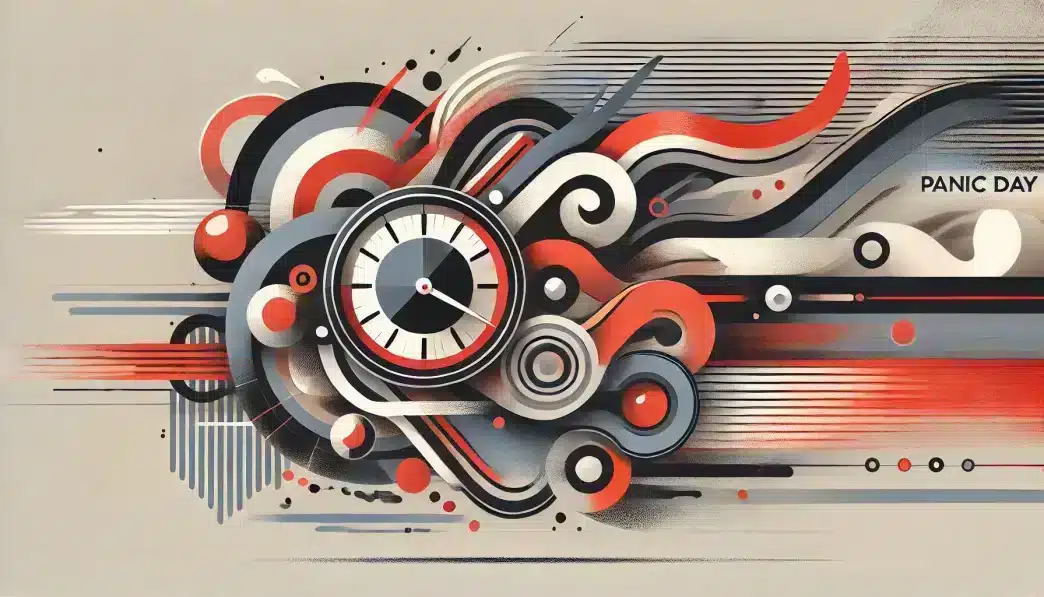What is Panic Day?
Panic Day is observed every year on March 9th in various countries around the world. It serves as a humorous yet meaningful reminder to address the stress and anxiety that are part of everyday life. The day encourages people to acknowledge feelings of panic, understand their causes, and explore healthy ways to manage them.
History and Origin
The exact origins of Panic Day are unclear, but it is thought to have been created to draw attention to the importance of recognizing stress and panic rather than suppressing them. By dedicating a day to panic, the message is to normalize conversations about mental health and encourage constructive coping strategies.
Although Panic Day often uses humor to lighten the mood, it also emphasizes the serious impact of stress on mental and physical well-being. The day is an opportunity to reflect on life’s pressures, step back, and reset.
Criticism of Panic Day
Some critics argue that Panic Day oversimplifies or trivializes the experiences of people with anxiety or panic disorders. They feel that framing the day humorously might downplay the seriousness of these conditions. Others see it as lacking actionable solutions for long-term stress management. However, supporters believe that Panic Day opens the door to discussions about mental health, offering a starting point for greater awareness and understanding.
Who Observes Panic Day?
- Individuals: Reflect on personal stress levels and engage in calming activities.
- Mental Health Organizations: Share resources and tips for managing panic and anxiety.
- Workplaces: Offer employees stress-relief initiatives like wellness breaks or relaxation activities.
- Schools: Teach students basic techniques for handling stress, such as mindfulness or breathing exercises.
- Social Media Users: Start conversations about managing stress and share relatable experiences.
Themes and Slogans
Panic Day typically focuses on recognizing stress and finding balance. Common slogans include “Pause Before You Panic” and “Turn Panic Into Progress.” These messages encourage people to use panic as an opportunity for reflection and growth rather than letting it overwhelm them.
Colors, Symbols, and Patterns
Colors
- Red: Symbolizes urgency and stress, common feelings during panic.
- Blue: Represents calm and relaxation, the ultimate goal of managing panic.
- Gray: Reflects neutrality, balance, and control.
Symbols
- Pause Button: Encourages people to take a moment and breathe.
- Heartbeat Lines: Reflect the physical symptoms of stress and panic.
- Clouds Parting: Symbolize overcoming panic and achieving clarity.
Patterns
- Wavy Lines: Represent the ups and downs of stressful situations.
- Circular Motifs: Reflect cycles of panic and calm.
- Balance Scales: Represent mental balance and stability.
How to Celebrate Panic Day
- Take Time for Yourself: Step away from stress and focus on activities that bring you calm.
- Practice Relaxation Techniques: Try meditation, yoga, or deep breathing to ease anxiety.
- Find Humor in Small Stresses: Laugh with friends or family to release tension and put things into perspective.
- Raise Awareness: Share stress-relief tips and mental health resources on social media.
- Plan for the Future: Create a strategy to handle overwhelming situations more effectively.
Most Used Hashtags
- #PanicDay
- #StayCalm
- #MentalHealth
- #StressAwareness
- #FindYourCalm
Why is Panic Day Important?
Panic Day reminds us that stress is a normal part of life, but it shouldn’t control us. By encouraging people to address their feelings of panic, the day promotes self-awareness and proactive mental health practices. It also opens the conversation about stress and anxiety, helping to reduce the stigma around these topics.
Through humor and self-care, Panic Day provides an opportunity to pause, reflect, and find better ways to navigate life’s challenges. It’s a reminder to prioritize mental health and seek balance in an often hectic world.
Features
March 9: Panic Day
Why do you keep falling for the same type?
Read the article Lovemaps: the hidden blueprint of our love.

